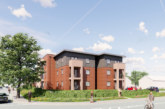With house prices predicted to increase by as much as 20% over the next five years, there is growing concern for the prospects of young people and first-time buyers to enter the property market. It is therefore more important than ever that Registered Providers consider a range of tenure options on their developments to not only provide the opportunity for lower income households to get on the property ladder, but also to create more stable communities for tenants, writes Jonathan Pearson, Director at Residentially Chartered Surveyors, specialising in Affordable Housing valuations.
Shared Ownership is currently a hot topic of discussion following the announcement of the new Affordable Homes Programme for 2021-26, the launch of the Government’s consultation on its new Shared Ownership model and the BBC Panorama investigation about the costs and legal fees incurred by shared homeowners, which aired just days after the consultation was announced.
Despite this mixed bag of talking points, the fact remains that Shared Ownership is still an accessible and affordable way for people to own a home of their own and it is increasingly important to today’s generation of first-time buyers.
Rapidly rising house values are pricing more and more people out of the property market, especially those from lower income households. The UK is already experiencing a huge jump in property prices — the biggest since 2016 — which has been caused in part by pent up demand accumulated during lockdown and partly due to the Government’s stamp duty holiday. The trend is likely to continue beyond 2020 and research by a leading national estate agent suggests that in the next five years, UK property prices could soar by a staggering 20.4%.
The economic conditions created by COVID-19 and Brexit are unlikely to help put starter properties within reach of first-time buyers either, as redundancies and unemployment rates continue to surge. ONS figures in November 2020 showed that unemployment rates are disproportionately high for young people, with more than 14% of 16-24 year olds out of work, compared to the overall unemployment picture of 4.8% for the whole of the UK.
All these factors compound an existing problem, aptly demonstrated by the fact that there has been a 46% increase in the number of young people aged 20-34 living with their parents in the past 20 years. Over the same period, average house prices have tripled.

Shared ownership model
So how do we get young people and first-time buyers on to the ladder? Part of the solution undoubtedly lies in Affordable Housing provision, and its ability to deliver Shared Ownership options to more people. To get the ball rolling, the Government has stated that half of all homes funded through the new £12bn Affordable Homes Programme will have to be of a Shared Ownership tenure.
The Government has also proposed a new Shared Ownership model, whereby tenants can buy shares in smaller increments (1% every year) to make it quicker and more affordable for them to build up their equity. Previously, these shares could only be bought in 10% increments. The new model also promises to reduce the fees required to acquire more shares in a property, and to reduce the minimum threshold to get a tenant started from 25% to 10% of the property’s value.
While the raft of new Government initiatives to encourage us to become a nation of homeowners, regardless of income or status, sound great on paper; the optimistic proposals will certainly be met with some trepidation.
Enforcing a 50/50 split of Shared Ownership and rental properties may not be a viable benchmark for every future development and while it may work in some areas, many housing associations and local authorities will be reluctant to offer up such a high percentage of their stock to Shared Ownership — instead, favouring the regular income from Social and Affordable Rents. Yet, the notable inclusion of Shared Ownership in a scheme can deliver wider benefits, which are difficult to quantify or measure, particularly in financial terms.
Stable communities
Shared Ownership encourages tenants to take pride in their property and its surroundings, helping Registered providers to keep its stock in a condition which encourages more people to do the same.
Shared Ownership encourages the growth of stable communities and neighbourhoods where people start a life, get involved in their local area, make friends, start families and generally help to foster a sense of community. COVID-19 has highlighted the importance of having communities where people look out for each other so the timing really couldn’t be better to get more people into secure, Affordable Housing.
Ultimately though, each Registered Provider or local authority will have its own views on the ideal mix of tenures which will work for their area. A healthy blend of tenures creates a diverse breadth of residents, which is a key ingredient to creating a happy and self-reliant neighbourhood or development. Whether we can legislate what that magic formula looks like in practice will remain to be seen.
Header image ©Vitalii Vodolazskyi/AdobeStock.









